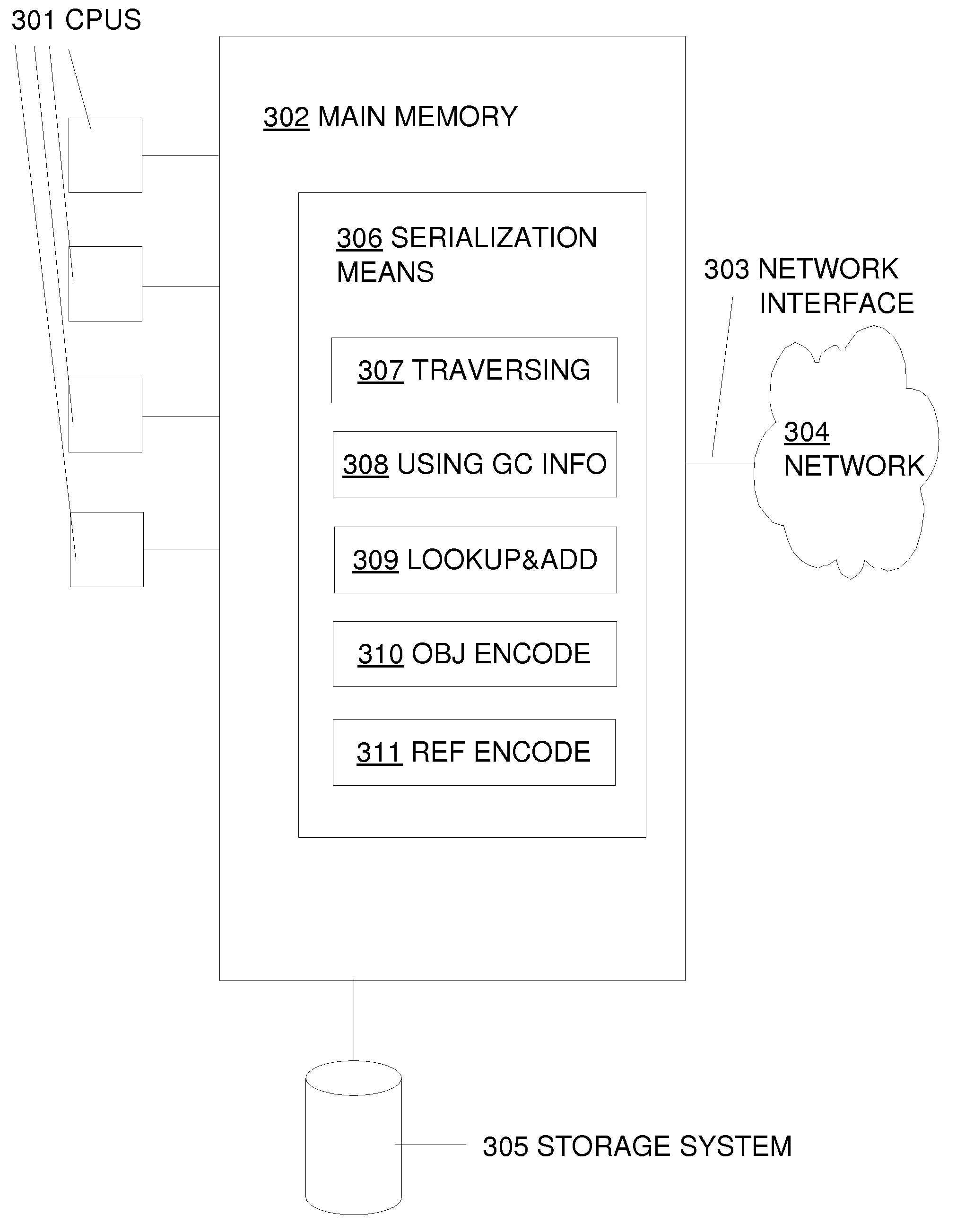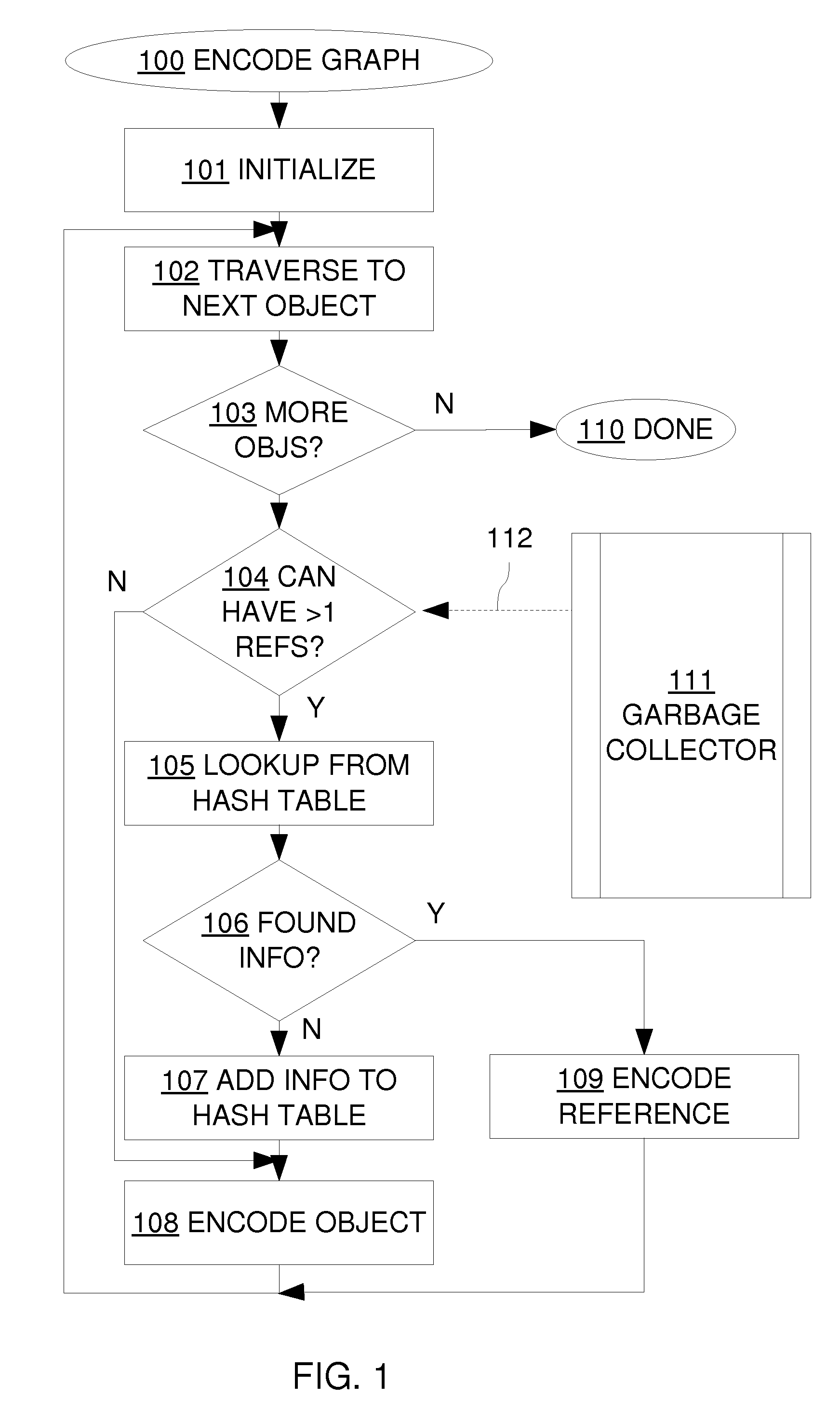Utilizing information from garbage collector in serialization of large cyclic data structures
a technology of cyclic data and information from garbage collectors, applied in the field of software technology, can solve the problem that the serialization of large graphs becomes particularly fast in such systems, and achieve the effect of improving serialization performan
- Summary
- Abstract
- Description
- Claims
- Application Information
AI Technical Summary
Benefits of technology
Problems solved by technology
Method used
Image
Examples
Embodiment Construction
[0021]FIG. 1 illustrates a serialization method that utilizes information from the garbage collector. (100) begins serializing (encoding) an object graph (it should be noted that “object” here is not limited to classes or structures; it also includes, e.g., numbers, arrays, strings, hash tables, characters, Lisp-like pairs, Lisp-like symbols and other data values). (101) initializes the traversal (e.g., initializes an index data structure such as a hash table, skip list or search tree and outputs an initial header to the resulting data stream). (102) illustrates traversing the object graph; while it is shown as a box here, it would typically be a recursive function or an iterative function with some or all of the recursion eliminated by, e.g., using an explicit stack data structure, as is well known in the literature relating to eliminating recursion from functions. (103) illustrates testing if there are more objects; if not, serialization is complete at (110) (some terminal actions...
PUM
 Login to View More
Login to View More Abstract
Description
Claims
Application Information
 Login to View More
Login to View More - R&D
- Intellectual Property
- Life Sciences
- Materials
- Tech Scout
- Unparalleled Data Quality
- Higher Quality Content
- 60% Fewer Hallucinations
Browse by: Latest US Patents, China's latest patents, Technical Efficacy Thesaurus, Application Domain, Technology Topic, Popular Technical Reports.
© 2025 PatSnap. All rights reserved.Legal|Privacy policy|Modern Slavery Act Transparency Statement|Sitemap|About US| Contact US: help@patsnap.com



